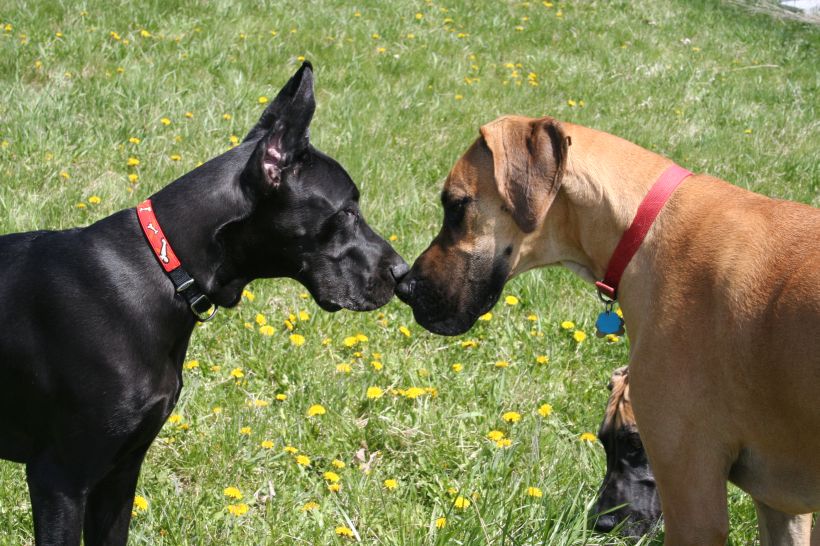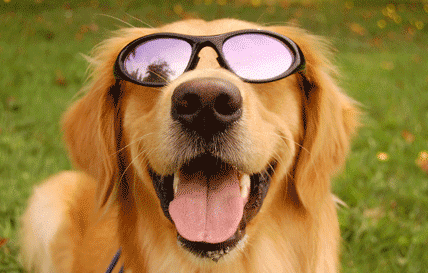(Courtesy of the ASPCA)
(ASPCA) -- We all love spending the long, sunny days of summer outdoors with our furry companions, but being over-eager in hot weather can spell danger, ASPCA experts warn.
"Most people love to spend the warmer days enjoying the outdoors with friends and family, but it is important to remember that some activities can be dangerous for our pets," said Dr. Camille DeClementi, Senior Toxicologist at the ASPCA's Animal Poison Control Center. "By following a few simple rules, it is easy to keep your pet safe while still having fun in the sun."
Take these simple precautions, provided by ASPCA experts, to help prevent your pet from overheating. And if you suspect your pet is suffering from heat stroke, get help from your veterinarian immediately.
#1 Visit the Vet
A visit to the veterinarian for a spring or early summer check-up is a must. Make sure your pets get tested for heartworm if they aren't on year-round preventive medication. Do parasites bug your animal companions? Ask your doctor to recommend a safe flea and tick control program.
#2 Made in the Shade
Pets can get dehydrated quickly, so give them plenty of fresh, clean water when it's hot outdoors. Make sure your pets have a shady place to get out of the sun, be careful to notover-exercise them, and keep them indoors when it's extremely hot.
#3 Know the Warning Signs
Symptoms of overheating in pets include excessive panting or difficulty breathing, increased heart and respiratory rate, drooling, mild weakness, stupor or even collapse. They can also include seizures, bloody diarrhea and vomit along with an elevated body temperature of over 104 degrees. Animals with flat faces, like Pugs and Persian cats, are more susceptible to heat stroke since they cannot pant as effectively. These pets, along with the elderly, the overweight, and those with heart or lung diseases, should be kept cool in air-conditioned rooms as much as possible.
#4 No Parking!
Never leave your animals alone in a parked vehicle. "On a hot day, a parked car can become a furnace in no time-even with the windows open-which could lead to fatal heat stroke," says Dr. Louise Murray, Vice President of ASPCA Bergh Memorial Animal Hospital. Also, leaving pets unattended in cars in extreme weather is illegal in several states.
#5 Make a Safe Splash Do not leave pets unsupervised around a pool-not all dogs are good swimmers. Introduce your pets to water gradually and make sure they wear flotation devices when on boats. Rinse your dog off after swimming to remove chlorine or salt from his fur, and try to keep your dog from drinking pool water, which contains chlorine and other chemicals that could cause stomach upset.
#6 Screen Test
"During warmer months, the ASPCA sees an increase in injured animals as a result of High-Rise Syndrome, which occurs when pets-mostly cats-fall out of windows or doors and are seriously or fatally injured," says Dr. Murray. "Pet owners need to know that this is completely preventable if they take simple precautions." Keep all unscreened windows or doors in your home closed and make sure adjustable screens are tightly secured.
#7 Summer Style
Giving your dog a lightweight summer haircut helps prevent overheating. Shave down to a one-inch length, never to the skin, so your dog still has some protection from the sun. Brushing cats more often than usual can prevent problems caused by excessive heat. As far as skin care, be sure that any sunscreen or insect repellent product you use on your pets is labeled specifically for use on animals.
#8 Street Smarts
When the temperature is very high, don't let your dog linger on hot asphalt. Being so close the ground, your pooch's body can heat up quickly, and sensitive paw pads can burn. Keep walks during these times to a minimum.
#9 Avoid Chemicals
Commonly used flea and tick products, rodenticides (mouse and rat baits), and lawn and garden insecticides can be harmful to cats and dogs if ingested, so keep them out of reach. When walking your dog, steer clear of areas that you suspect have been sprayed with insecticides or other chemicals. Keep citronella candles, oil products and insect coils out of pets' reach as well. Call your veterinarian or the ASPCA Animal Poison Control Center at (888) 426-4435 if you suspect your animal has ingested a poisonous substance.
#10 Party Animals
Taking Fido to a backyard barbeque or party? Remember that the food and drink offered to guests may be poisonous to pets. Keep alcoholic beverages away from pets, as they can cause intoxication, depression and comas. Similarly, remember that the snacks enjoyed by your human friends should not be a treat for your pet; any change of diet, even for one meal, may give your dog or cat severe digestive ailments. Avoid raisins, grapes, onions, chocolate and products with the sweetener xylitol.
Solve your dog's behavior problems, develop a stronger relationship and bond and create your leadership role within your pack!
Friday, July 27, 2012
Wednesday, July 18, 2012
Meeting And Greeting
 |
| Proper Greeting For Dogs |
and rewarding experience. Dogs can play a role in encouraging friendships and meeting new people. They get people out of the house for exercise and motivate owners to become more involved in rescues and shelters. If a first time introduction doesn’t go as smoothly as you’d like, don’t fret, try again in the future. As an example, when my two
 |
| Face-to-Face Greetings can quickly lead to fights between unknown dogs. |
 |
| Walking dogs together is a great way for them to socialize in a controlled environment. |
Subscribe to:
Comments (Atom)




